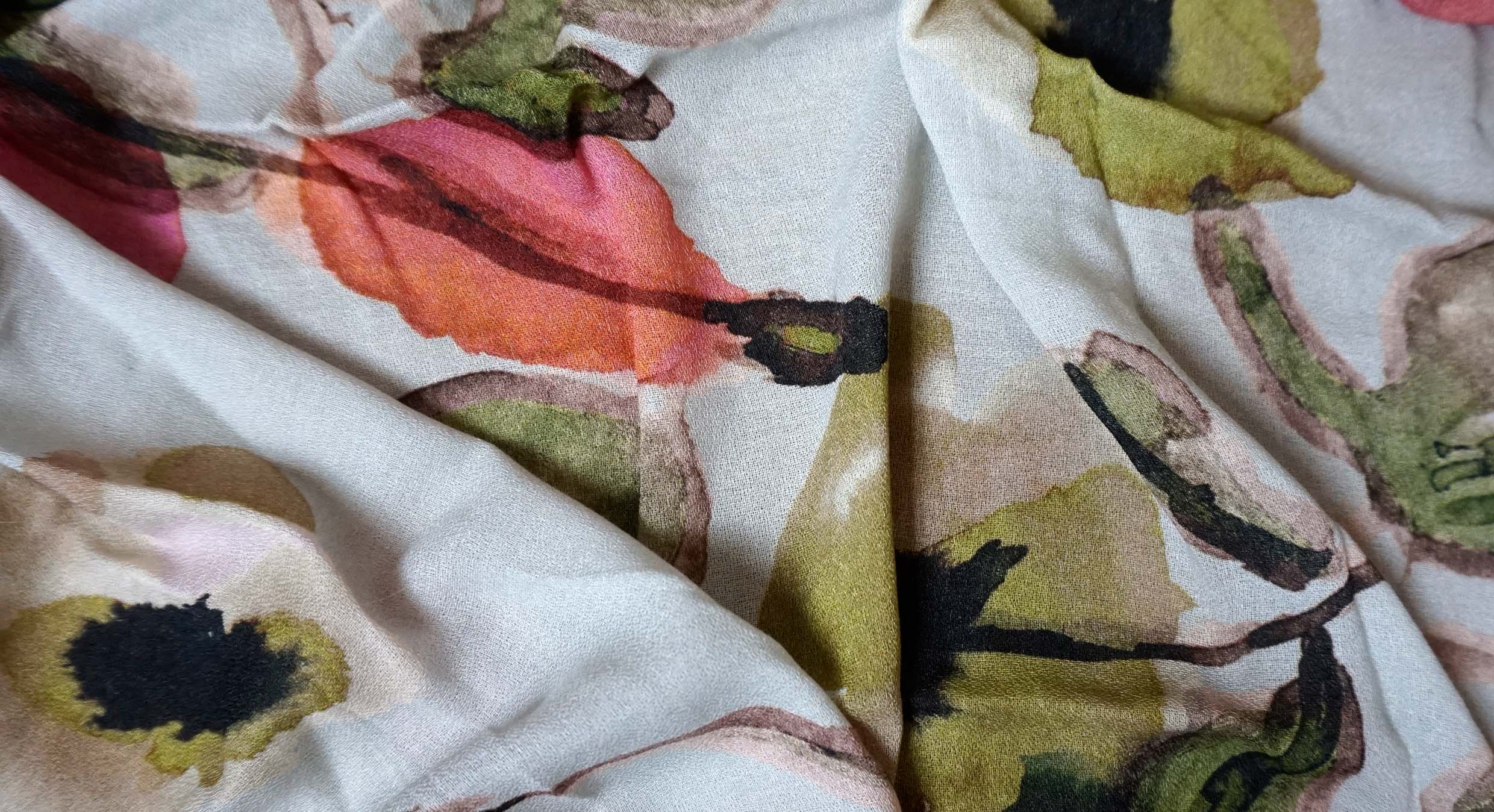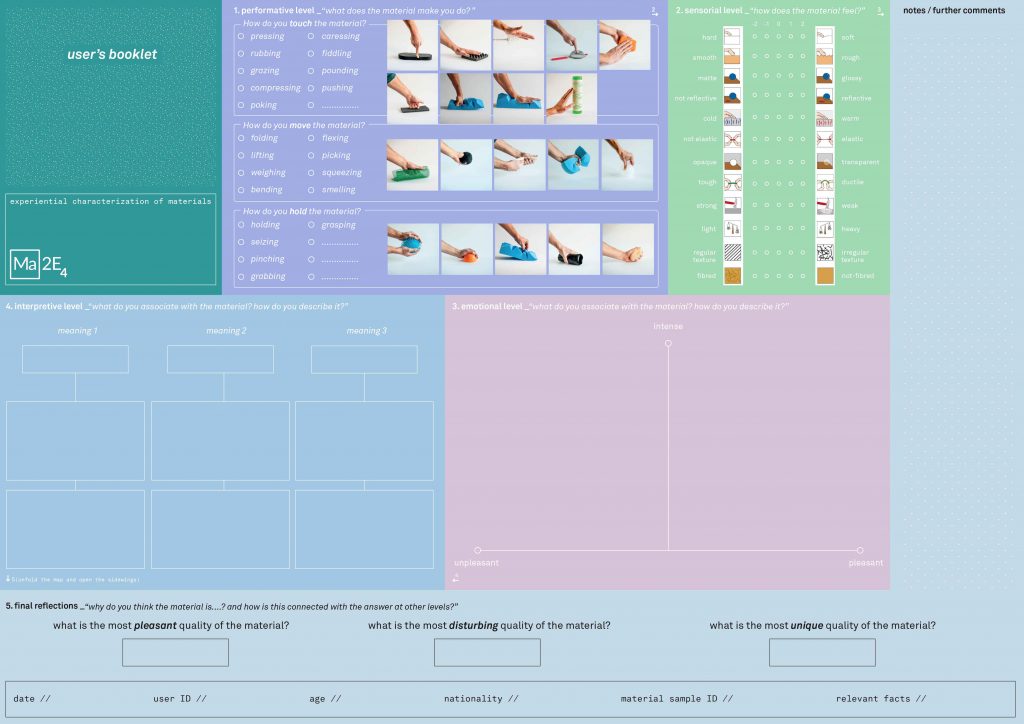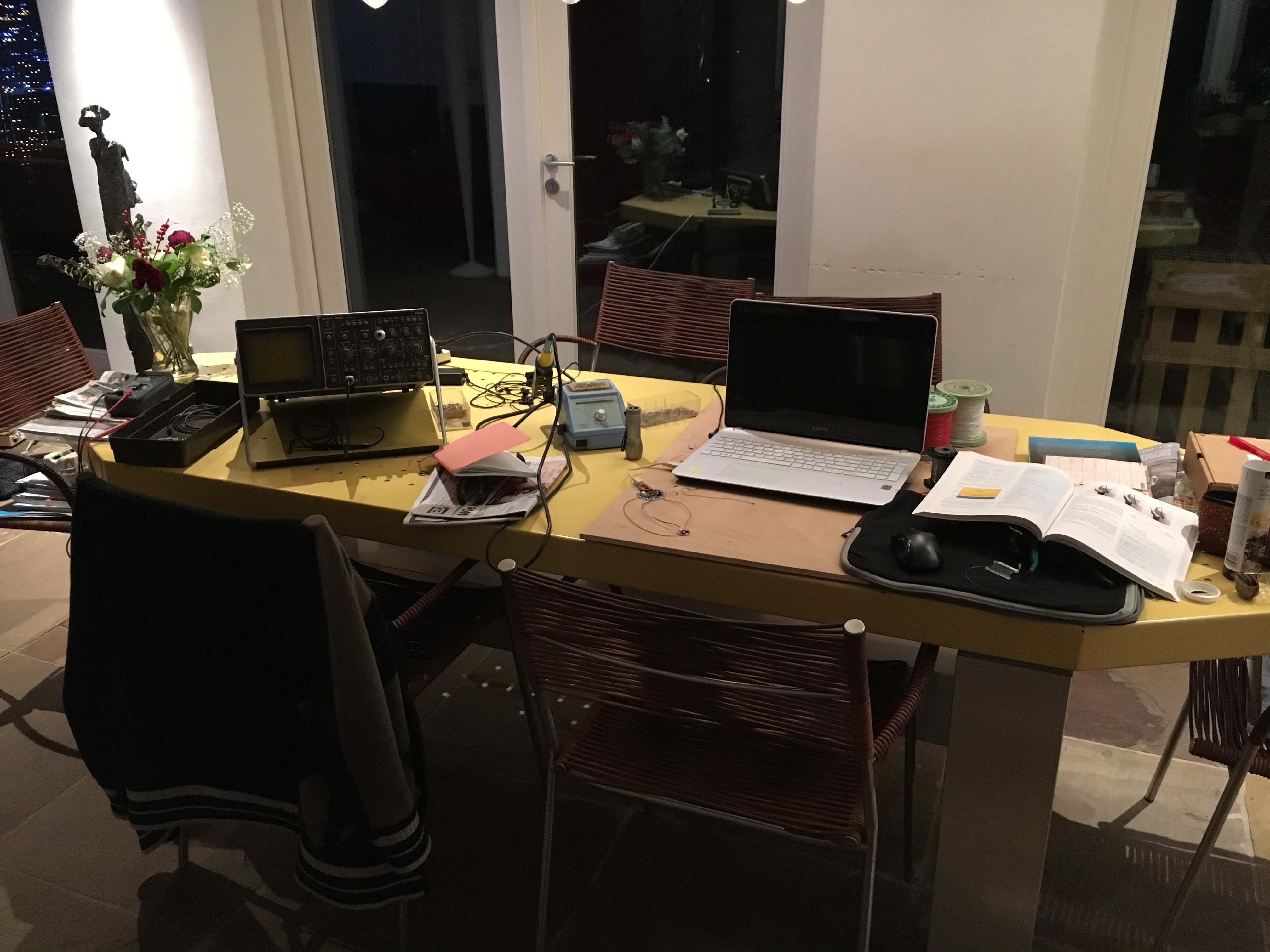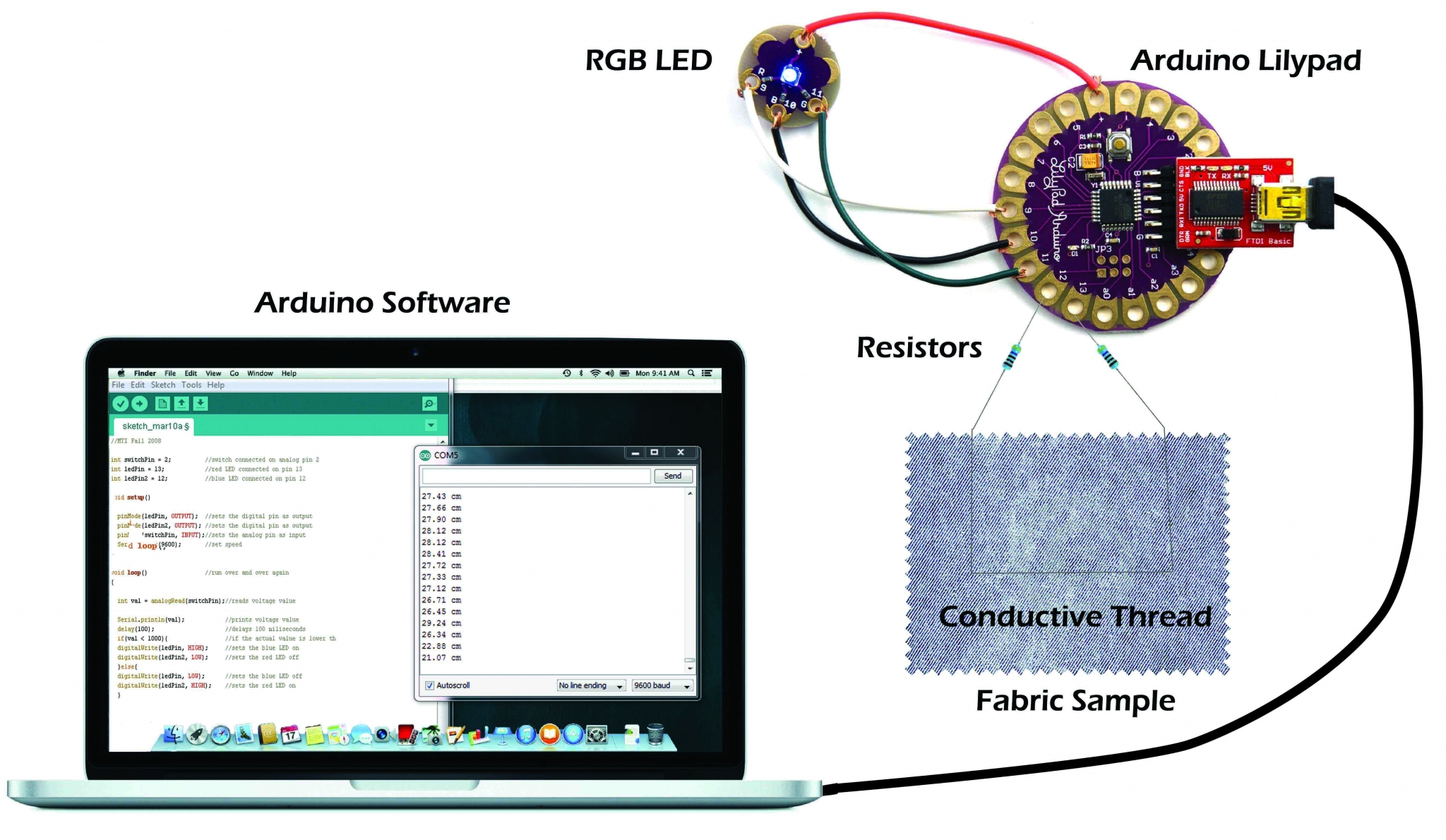To conclude the first phase a practical study is organized where the Material Driven Design Methodology will be used; a step-by-step approach where new materials will get a better design perspective. The main questions towards new materials are ‘What is the material, what can the material do and what can you make with use of this material? These questions will be answered with use of the toolkit provided by Serena Camere in co-creation sessions with multidisciplinary groups.
Group 1 – DfI students with affinity towards fashion, experienced with touch and out of the box thinking.
Group 2 – students from different backgrounds; Industrial Design Engineering, Physics and Electrical/Aerospace Engineering. They have an advanced understanding about electric circuits and experience with wearable technology.
Group 3 – experts from the fields of Textile Design, Electrical Engineering and Fashion.
Goal
The outcome of this phase is to understand the meaning of the material; what are its limits and possibilities, what are its properties, what emotions does it evoke and how is it interpreted?
Approach
The students will start by exploring the materials. Provided are two samples (30×50 cm) of a very cheap silk, a standard denim and viscose with a print. They are of different qualities and look in order to test a broader range of textile properties. Two samples of every material are put on the table. One without any smart materials and the other one with stainless steel wire, the lilypad and an RGB LED. The users are asked to evaluate the materials with use of the toolkit. Every level will go deeper into the evaluation. The levels are as follows:
a. PERFORMANCE; The participants are asked to freely explore the material. Then, they are asked to describe what the material makes them do.
b. SENSORIAL; The participants are asked to explore the material with her/his senses and rate it with the sensorial scale provided.
c. EMOTIONAL; The participants are asked to describe which emotions the material elicits to them.
d. INTERPRETIVE; The participants are asked to choose 3 adjectives from the set provided and place them on the template. Then they are asked to select 2 pictures for each word, to explain what they associate with that word.
e. Finally, the participants make a selection:
– Which material is the most pleasant?
– Which material is the most disturbing?
– Which material is the most unique?
The toolkit is a means to observe and discuss the materials one by one. The discussion is the most interesting part of the research, since the users then have evaluated every level which provided them with enough insights on the properties of the material to give a meaningful final verdict.
Insights group 1
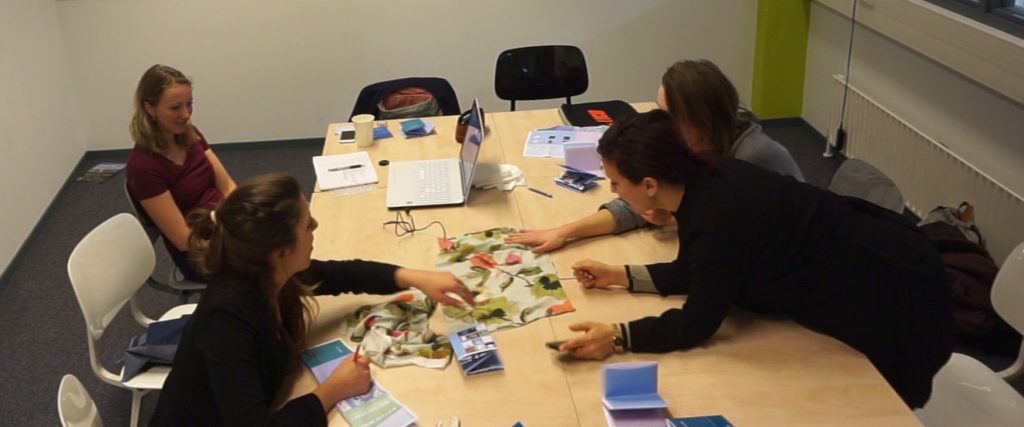
The interaction was not clear in all of the samples, though adding clear use-cues helps to understand the interaction better. Not being able to understand the interaction and the function raises frustration. The sort of interaction is dependent on the body placement and on the type of material that is used. Also, all of the materials were associated with previous experiences and feelings.
Dark colors resemble masculinity; light colors and print resemble femininity. Viscose and silk are therefore experienced as feminine and denim as masculine.
The look and feel of denim is considered of high quality, whereas silk is considered very low quality. The smell of viscose and denim is though experienced as unpleasant.
Patterns are very personal and need to be in line with the type of interaction input and output. An unexpected shape and unexpected interaction can enlarge the level of curiosity.
The color, smell and weave structure can help to raise the level of experienced quality.
Denim and viscose are materials that have a multipurpose.
The feel of viscose and silk is experienced as nice and denim feels natural. The flow of silk was found very amusing.
Insights group 2
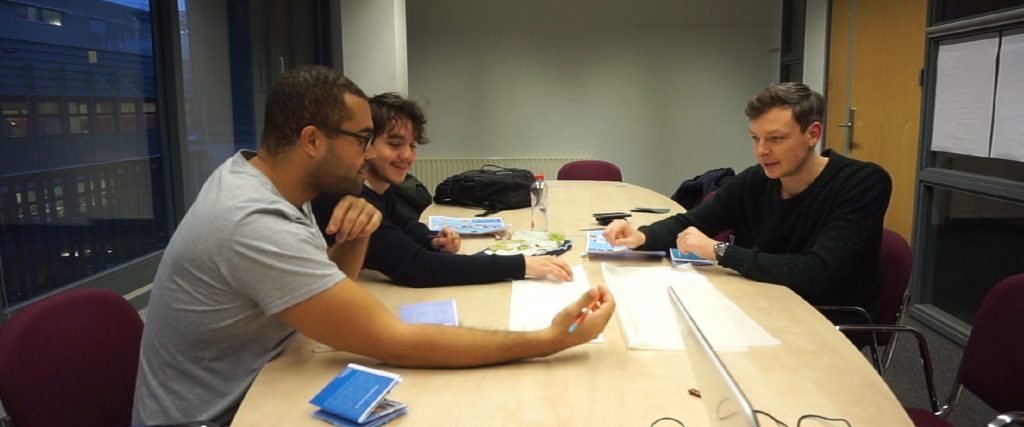
Group 2 explored two materials; denim and silk. In both materials the interaction was not clear and therefore unpleasant. Though, the interaction with denim was a subtle interaction instead of flashy one in the silk. The flashy light works well in the silk. Therefore the interaction with the light is considered personal in denim and social in silk due.
The group had fewer associations with the silk material and therefore they find it inviting to touch because of its mystery and seductiveness. The silk material was found to look more like a product than a piece of clothing. The denim is considered as part of clothing.
Insights group 3
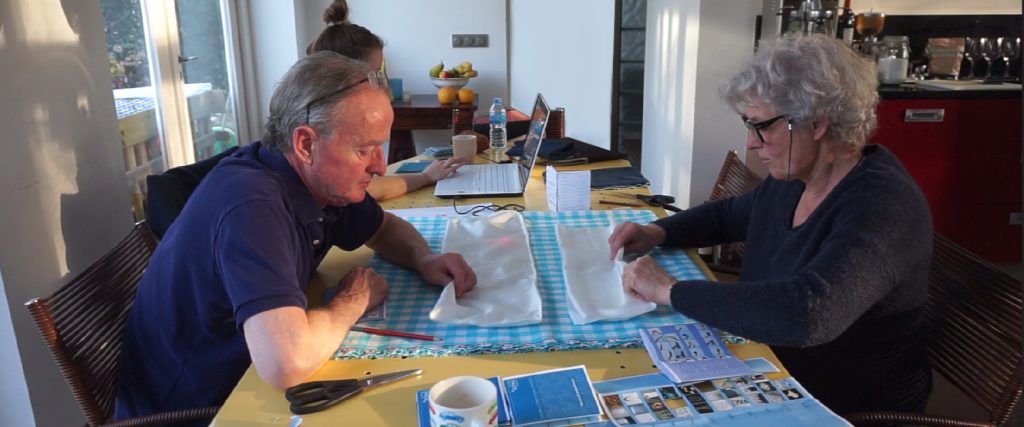
Exploring the material is depended on the type of material; denim was weighed, viscose and silk were fiddled with and looked through.
Both denim and silk are very unlikeable materials. The materials are considered cheap and of low quality. Touching and exploring these materials is different than they expected. Especially silk was hard to connect emotions to and was experienced as aloof.
Silk and viscose both have a very nice flow which feels feminine natural and is attractive and comfortable. Also, the structure of silk and viscose is perceived as pleasant; viscose has a clear structure which makes it elegant. Silk has a very smooth structure which gives it a chic luster. The crease in viscose was experienced both as positive when it’s part of the structure, but negative when it wrinkled heavily.
Denim and viscose know many different purposes, but silk is mostly used in hot surroundings.
The functionality did not work accordingly or was not investigated.
Conclusion
The materials that came out of the material test are very divers. Testing them on different types of user groups gave insight on the quality, possibilities and limits of each of the materials.
Overall attention has been paid to the luster, flow, weight, feel, shape, texture, use-cues, interaction, color, pattern, context and ways to wear.
Toughness and flexibility play a large role on how the material is explored and held. The tough material was being scratched, folded, stretched and weighed. By doing this a verdict is given on the quality. The flexible materials were being wrinkled, fiddled, dropped and waved.
Next to the type of color, having a pattern also attracts or repels people. A pattern should fit a person’s style or social environment. This could also be used when wanting to label a certain group of people.
The functioning of the smart part of the material should be clear and well responsive. Adding use-cues helps to understand where to touch the material in order to let something happen. The type of interaction should fit the type of material, but is also dependent of the placement of the material on the body. An unfamiliar shape raises curiosity, but also makes users insecure how to approach the material.
Denim
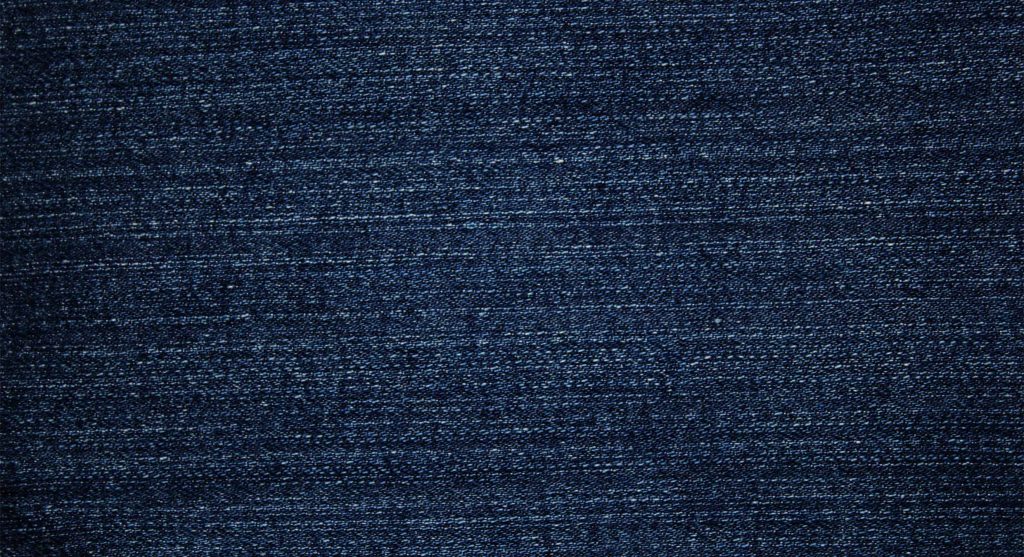
Denim is a very stiff and tough material that knows various types of garments and is unisex. It is a comfortable and nostalgic textile which users have associations with quickly, e.g. best friend and childhood memories.
It could serve to protect the body during work, but it is also worn at home to relax in.
Denim is seen as masculine due to its color, but also due to its toughness. The type of color and weave structure are important factors to wearers to like or to dislike the material.
The interaction here was too subtle and therefore did not fit the material properly. Still, a subtle type of communication is favored, since the material expresses friendly and comfortable emotions.
Silk
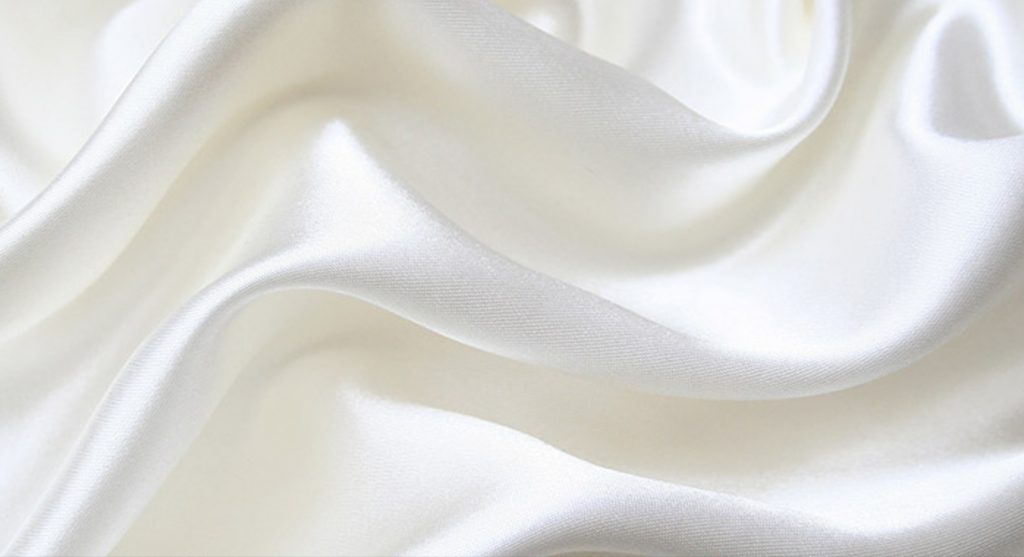
Silk is a very lustrous, playful and mysterious material that is inviting users to explore by its physique. The luster shows the movement of the flexible fabric. The feel is very soft.
Silk is seen as feminine due to its color, luster, softness and flow. The quality of the silk is very important in order to be liked by the wearer.
The material is seen both in a social and in a personal context in which temperatures are rather high. The social context is mentioned by letting others enjoy the type of interaction while the wearer interacts with it. In the personal context the wearer wears the garment directly on the skin when interacting with it.
The transparency of the fabric showed the placement of the stainless steel fiber clearly which was a use-cue where to touch the material to get a response. Even though the interaction was clearer, the response was not. The flashy light did fit the material in terms of a social context.
Viscose
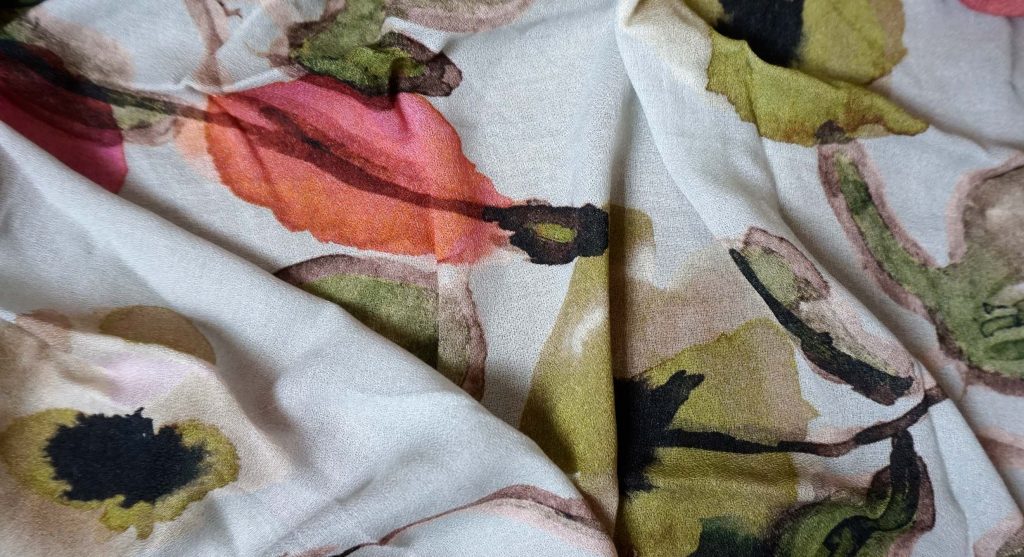
Viscose is a very playful, natural, soft and pleasant material. Being able to see the structure made the material elegant and unique. It is a lot stronger than it looks. A natural crease in the structure can be unique and playful, but easy crease due to wearing or carrying is unfortunate.
Viscose is seen as feminine due to its softness, flow and in this case print. Women can relate to it very well. The fabric fits well in various contexts.
The colors of the light from the RGB LED did not fit the colors of the print well. Next to that, the nervous flickering of the light did not fit the soft and calm emotions that the fabric expressed. Though, the flow of the material made interacting with the light playful.
Which material is most interesting to work with in this research and design project?
All three materials have high potential to become an interesting smart garment. Though, only one material will be used.
Viscose is a material that is very broad and could be used for multiple purposes. Though, its man-made recipe is not as attractive to work with. Denim and silk on the other hand can be made straight out of nature. Denim is made from cotton plants and silk is made from silk cocoons. Though denim has already been investigated in smart touch garments and is therefore less interesting to work with.
The mystery and unique qualities of silk fit the smart textile innovations very well. Therefore this project will concentrate itself around the world of silk and stainless steel to introduce a new piece of touch sensitive clothing to show the world yet another possibility of smart textiles.

